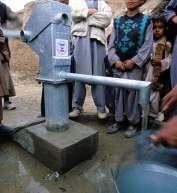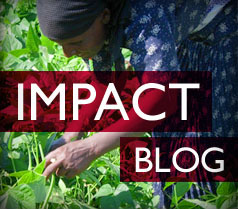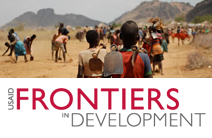- Agriculture and Food Security
- Democracy, Human Rights and Governance
- Economic Growth and Trade
- Education
- Environment and Global Climate Change
- Frontiers in Development
- Gender Equality and Women's Empowerment
- Global Health
- Science, Technology and Innovation
- Water and Sanitation
- Working in Crises and Conflict
- Responding in Times of Crisis
- Crises and Conflict Countries
- How We Do It
- Where We Work
- Afghanistan
- Benin
- Bosnia and Herzegovina
- Bulgaria
- Burkina Faso
- Burma
- Cambodia
- Cameroon
- Central African Republic
- Chad
- China
- Comoros
- Côte d’Ivoire
- Democratic Republic of the Congo
- Ecuador
- El Salvador
- Ethiopia
- Fiji
- Ghana
- Guatemala
- Haiti
- Honduras
- Horn of Africa
- India
- Indonesia
- Kenya
- Lesotho
- Liberia
- Madagascar
- Malawi
- Mali
- Mauritania
- Montenegro
- Mozambique
- Niger
- Pakistan
- Papua New Guinea
- Paraguay
- Philippines
- Republic of the Congo
- Senegal
- Somalia
- South Sudan
- Sri Lanka
- Sudan
- Syria
- Tanzania
- Thailand
- The Gambia
- The Sahel
- Tunisia
- Turkey
- Tuvalu
- Vietnam
- Yemen
- Why It Matters
- How To Help
- Resources
- Building Resilience
- Conflict Mitigation and Prevention
- Disaster Risk Reduction
- Peacebuilding and Reconciliation
- Promoting Peaceful Political Transitions
- Providing Safe & Secure Environments for Development
- Recovering From Crisis
- World Humanitarian Day
- Responding in Times of Crisis
Niger

To date in Fiscal Year (FY) 2012, USAID has responded to two disasters in Niger—food insecurity triggered by drought, decreased crop production, and high food prices that began in the final months of 2011, as well as heavy rains that resulted in floods throughout the country in August 2012.
USG HUMANITARIAN FUNDING PROVIDED IN FY 2012
|
USAID/OFDA Assistance to Niger |
$17,048,670* |
|
USAID/FFP Assistance to Niger |
$94,018,800 |
|
Total USAID Assistance to Niger |
$111,067,470 |
*This figure includes funding for both disaster response and disaster risk reduction activities. (As of September 14, 2012)
Latest Niger Fact Sheet
Sahel Food Insecurity and Complex Emergency Fact Sheet #16 (417kb PDF) and map (208kb PDF)
USAID/DCHA Pounds of Prevention - West Africa (278kb PDF)
Key Developments
Heavy rains in August 2012 resulted in floods throughout Niger, particularly in Diffa, Dosso, Maradi, Tahoua, and Zinder regions and in the capital of Niamey. By August 24, floods had resulted in more than 50 deaths and affected more than 370,000 people, according to the Government of Niger (GoN). In addition, floodwaters had destroyed more than 52,000 homes, killed livestock, and damaged stored grain, prompting the GoN to declare a crisis and request international assistance. Many displaced families sought temporary shelter in schools and other public buildings or with relatives. To address urgent needs, the GoN provided funding for emergency food assistance and relief commodities, while humanitarian organizations distributed emergency relief supplies and shelter materials.
On August 28, U.S. Ambassador Bisa Williams declared a disaster due to the effects of the floods. In response, USAID’s Office of U.S. Foreign Disaster Assistance (USAID/OFDA) provided $50,000 through the U.S. Embassy in Niamey for immediate assistance to flood-affected people.
In addition, uneven and sporadic rainfall during the May-to-October 2011 rainy season led to decreased crop and fodder production, which caused deteriorating food security in localized areas of Niger, particularly in the western regions of Dosso, Tahoua, and Tillabéri. The hunger season, which normally starts in March in most areas, began early in some areas. On December 20, 2011, U.S. Chargé d’Affaires, a.i., Lucy K. Abbott issued a disaster declaration due to the effects of food insecurity in Niger.
As of June, approximately 5.5 million people remain at risk of food insecurity in Niger as a result of high grain prices, increased demand for seeds, limited income-generating opportunities, and an increased population, including returned migrant workers and Malian refugees, according to the USAID-supported Famine Early Warning Systems Network (FEWS NET). FEWS NET reports that Tillabéri Region is hosting an above-average number of food-insecure households.
USAID/OFDA-supported programs in Niger seek to reduce the prevalence of acute malnutrition, restore livelihoods, increase agricultural production, improve livestock health, and provide cash grants to increase access to goods available in local markets. Funding from USAID’s Office of Food for Peace (USAID/FFP) supplies emergency food assistance and cash transfers to vulnerable Nigerien families.
@theOFDA
-
theOFDA
MT @USAID: We are the largest provider of in-kind food aid + one of largest providers of cash-based food asst in the world. #WFD2012
6 hours 4 min ago.
-
theOFDA
RT @UNICEF: Did you know handwashing with soap is the single most cost-effective health intervention ever? #iwashmyhands Please RT!
4 days 13 hours ago.
-
theOFDA
Women and Girls Reduce Disaster Risk Every Day t.co/ZGNjnYIf #IDDR
4 days 17 hours ago.








Comment
Make a general inquiry or suggest an improvement.